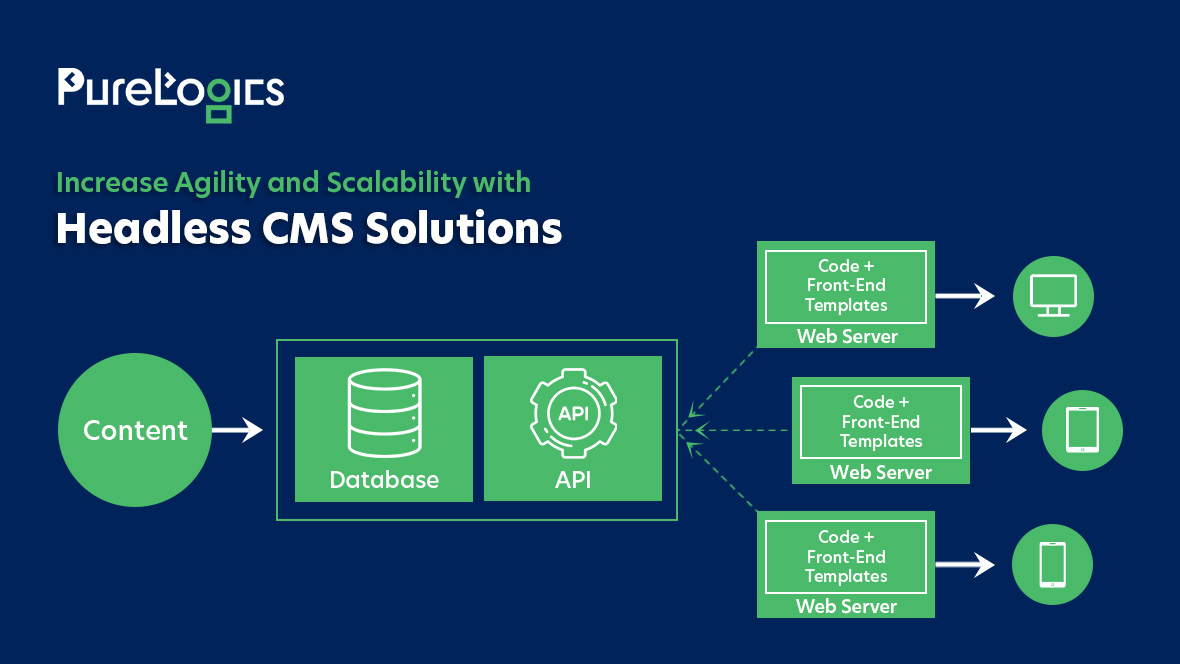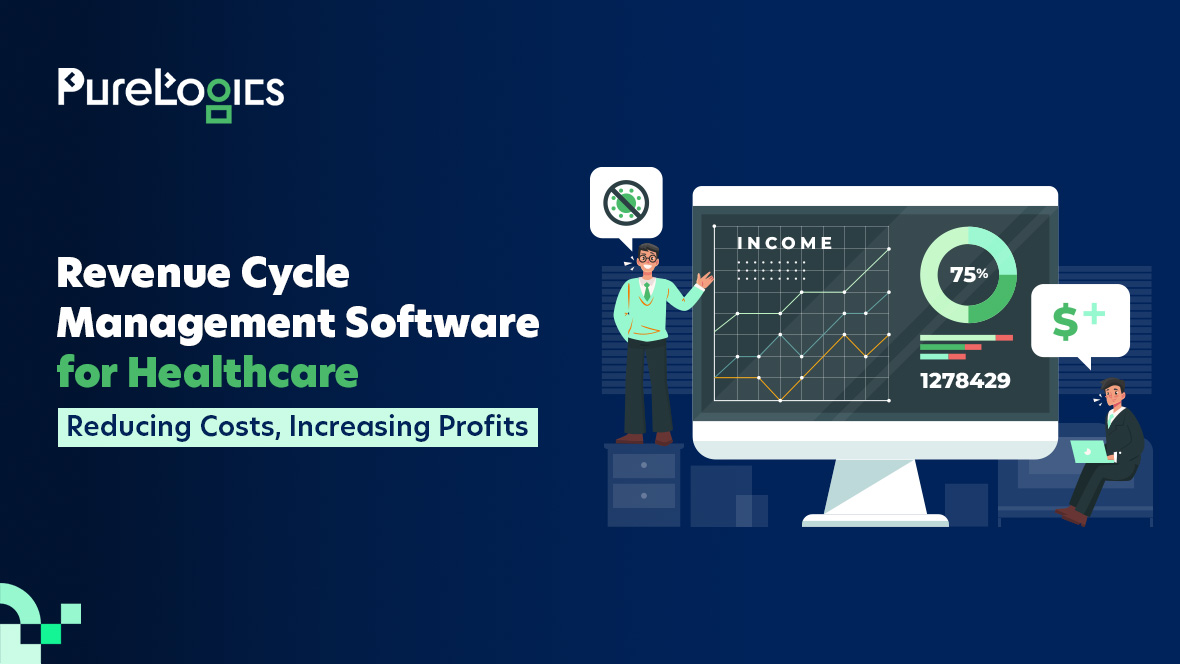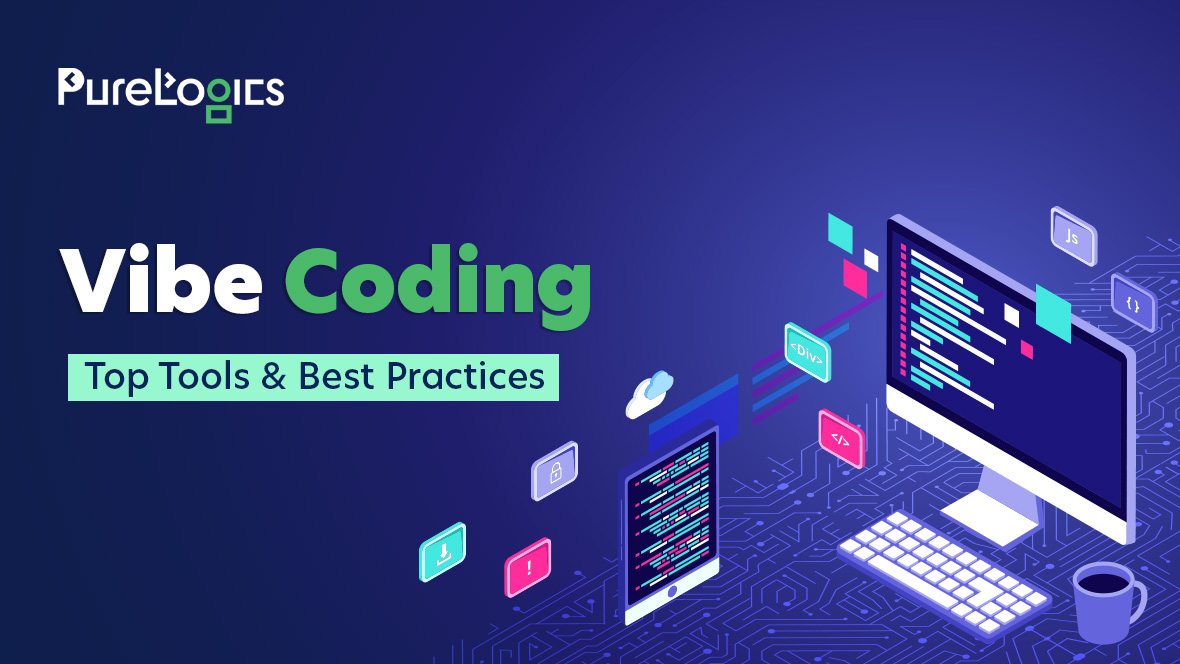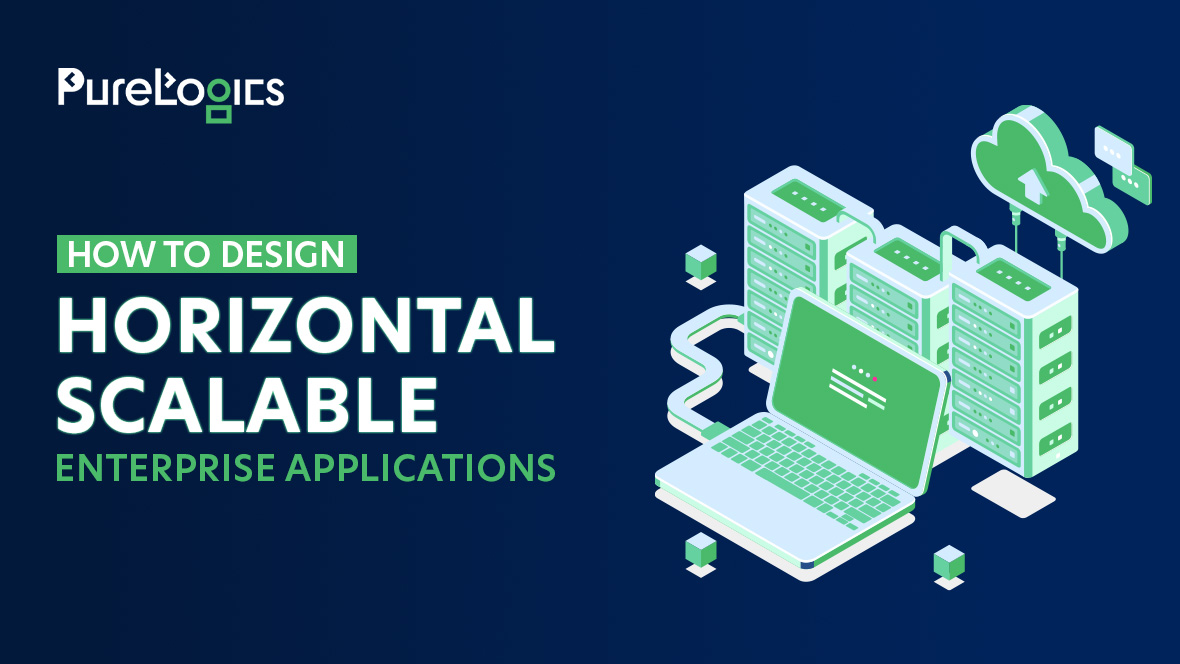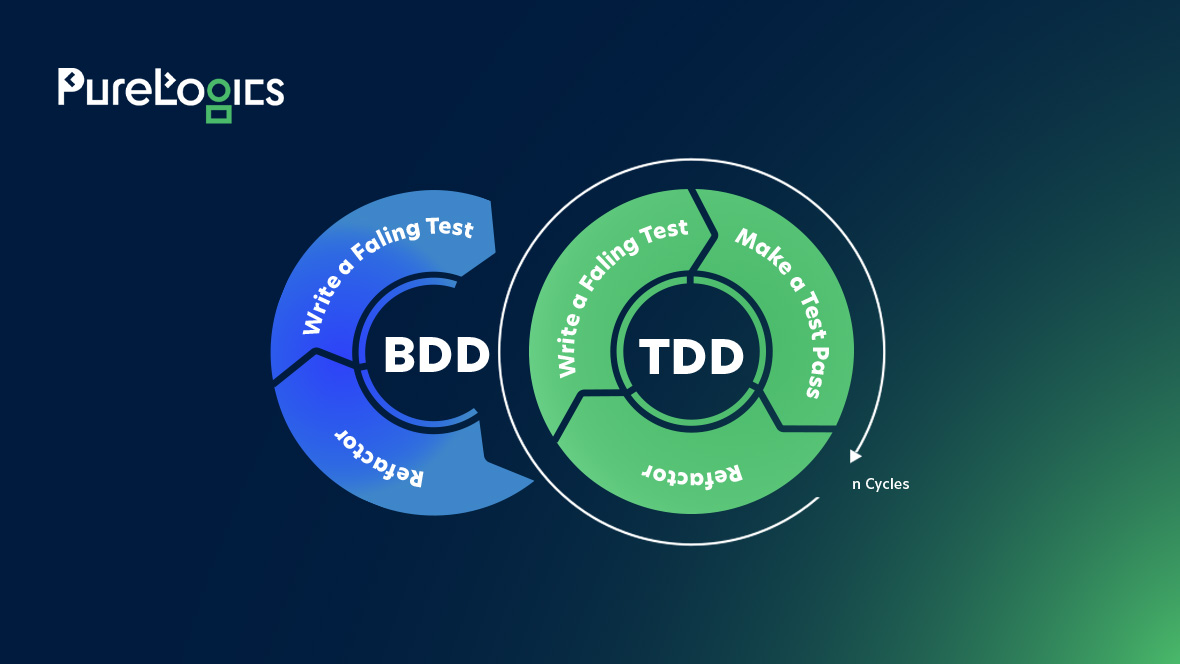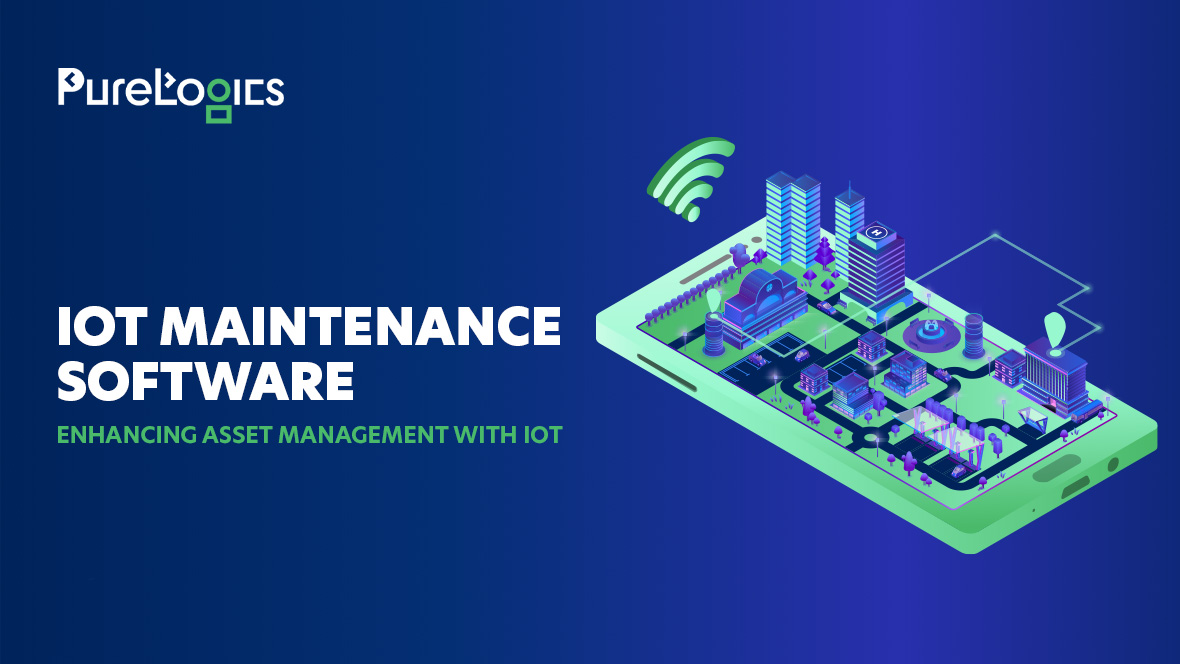In today’s fast-paced digital age, businesses are always searching for better ways to connect with their audience and make their online presence stand out. A content management system (CMS) plays a key role in handling online content, but the old-style CMS setups often fall short when it comes to flexibility and supporting growth.
Enter headless CMS.
A headless CMS works by splitting the back-end, where content is stored and managed, from the front-end, which controls how content looks to users.
This setup gives you more freedom to design, makes things faster, handles growth better, and adds an extra layer of security—all while keeping everything running smoothly.
This blog post explain headless CMS solutions in detail and elaborates how they can boost your organization’s agility as well as scalability.
What is a Headless CMS Solution?
A headless CMS is a type of content management system that removes the bond between the content repository and the presentation layer. This allows users to pull unformatted content from the repository and deliver it to the available channels and platforms.
How a Headless CMS Solution Works
A headless CMS works differently from a traditional CMS. It separates content creation from how it’s shown to users. This setup makes things more flexible, scalable, and efficient.
In a traditional CMS, creators use a dashboard to create, edit, and publish content. The CMS takes care of both managing the content and displaying it on the website or app.
With a headless CMS, content creators still use the dashboard to do their work. However, the system doesn’t manage how the content looks. Instead, it sends the content through an API (a kind of messenger for apps) so developers can display it however they want—on a website, app, or even something like a smartwatch.
Redefine Your Online Presence
Boost your business agility and scalability with headless CMS.
Difference Between Traditional CMS and Headless CMS
The following table will help you understand the significant difference between the traditional and headless CMS.
| Aspect | Traditional CMS | Headless CMS |
| Architecture | Monolithic, coupled front-end and back-end | Decoupled, separate front-end and back-end |
| Content delivery | Renders content directly through templates | Delivers content via APIs to any front-end |
| Flexibility | Limited flexibility in front-end design | Highly flexible, any front-end can be used |
| Omnichannel support | Primarily for websites | Supports multiple channels (web, mobile, IoT, etc.) |
| Scalability | Less scalable due to its coupled nature | Easily scalable with independent back-end |
| Content management | Integrated content management and presentation | Pure content management, presentation done externally |
| Time to market | Slower as changes require updating both layers | Faster, changes made in the back-end can go live quicker |
Key Advantages of a Headless CMS
Now, let’s explore what advantages a headless CMS offers!
Flexibility Across Multiple Platforms
One of the most significant advantages of a headless CMS is its platform-agnostic nature. With a traditional CMS, content is often locked into a specific presentation layer, limiting the ability to repurpose that content across different platforms.
A headless CMS eliminates this constraint by delivering content via APIs, making it accessible to any front-end system. This allows businesses to push content to websites, mobile apps, social media, smart devices, and even AR/VR experiences seamlessly.
Faster Time to Market
A traditional CMS requires developers to customize templates and integrate design elements within the CMS itself, often resulting in slow development cycles.
On the other hand, a headless CMS accelerates the time to market by enabling developers to work independently on the front-end design and functionality without being restricted by the back-end content structure. This parallel workflow reduces development bottlenecks, allowing companies to roll out updates, new features, and campaigns much faster.
Scalability for Growing Businesses
As your business grows, so do the demands placed on your content management system. A headless CMS offers scalability in two key ways: it supports increasing content complexity, and it scales to meet traffic demands. With APIs at its core, a headless CMS makes it easier to integrate new platforms and technologies as your business evolves.
For growing organizations, this means that a headless CMS can easily scale to support new channels, audiences, and touchpoints without requiring a complete overhaul of the system. Furthermore, because the content and presentation layers are decoupled, you can scale content delivery without the risk of bottlenecks in the front-end infrastructure.
Enhanced Security
A headless CMS provides an additional layer of security by isolating the front-end and back-end. Since content is served via APIs, a headless CMS limits the exposure of your critical systems to potential cyberattacks.
In addition to this, hosting the front-end separately allows you to apply advanced security measures, like web application firewalls and CDN-based protection, further safeguarding your platform.
Real-World Use Cases for Headless CMS
The following are some prominent use cases of headless CMS. Have a look!

E-Commerce Platforms
E-commerce businesses benefit greatly from headless CMS solutions because they can deliver a unified shopping experience across multiple platforms. Whether a customer is browsing on a desktop, mobile app, or a voice assistant like Alexa, a headless CMS ensures that the product information, pricing, and customer reviews remain consistent.
With headless CMS, developers can quickly introduce new features, such as dynamic content, personalized product recommendations, and localized content, without disrupting the back-end operations. This agility is essential for scaling an e-commerce platform to handle higher traffic loads during events like Black Friday sales.
Media and Publishing Companies
In an industry where content is king, media and publishing companies must distribute articles, videos, podcasts, and other multimedia across a wide array of digital channels. A headless CMS enables them to manage and deliver content more efficiently to websites, apps, social media platforms, and even emerging channels like smart TVs and wearable devices.
With headless architecture, content creators can focus on producing high-quality content, while developers ensure it’s presented optimally for different audiences. This decoupled approach also makes it easier to experiment with new formats and channels, keeping audiences engaged.
Global Enterprises
For global enterprises operating in multiple regions and languages, maintaining a consistent brand message can be challenging. Headless CMS solutions enable organizations to streamline their content management processes by delivering region-specific content while maintaining central control over branding and messaging.
Localization becomes more efficient with the ability to adapt content quickly and deploy it across various markets without the need for duplicating effort. This efficiency not only increases agility but also improves scalability as businesses expand globally.
Elevate Your Digital Security
Protect your systems with advanced headless CMS security.
Challenges and Considerations of Headless CMS
While headless CMS offers flexibility and scalability, it also presents challenges such as increased developer dependency, as the front-end must be custom-built. Integration with multiple systems can be complex, requiring technical expertise.
Also, content management can become fragmented without a unified interface, necessitating strong collaboration between content creators and developers to maintain efficiency.
Is Headless CMS Right for Your Business?
Headless CMS solutions provide businesses with enhanced agility, scalability, and flexibility, making them ideal for delivering content across multiple platforms. While technical expertise is needed for implementation, the benefits often outweigh the challenges.
If you’re looking to upgrade your content management strategy, our team at PureLogics specializes in implementing and managing headless CMS solutions according to your unique business needs. Let us help you streamline your operations and deliver dynamic digital experiences. Contact us now to learn more!


 [tta_listen_btn]
[tta_listen_btn]
 December 6 2024
December 6 2024

